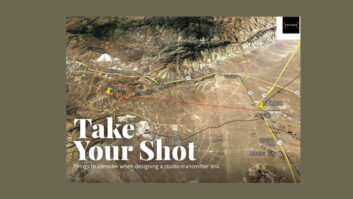This is one in a series in which Ibiquity Digital Corp. answers questions about how to implement in-band, on-channel digital audio broadcasting.Broadcast Technology Manager Jeff Detweiler answers here.
Q:How much delay is added by an IBOC system? One of my stations is running in delay, the other is not. What will be the impact on both if I transition them to digital broadcasting?
A: There is no noticeable impact to stations already operating in delay.However, for stations not currently operating in delay, you will likely need to make monitoring changes because a delay of about 7 seconds is added when transmitting an IBOC digital signal.
Buffering and processing delays exist in any digital transmission system. Once the delay reaches the 15- to 20-millisecond range, depending on the person, certain on-air talent could have problems with monitoring off the air. Longer delays make off-air cueing difficult for remote broadcasts, including aircraft-based traffic reports.
Increasing the number of digitally processed stages in the audio path adds to the signal latency. Digital studio-to-transmitter link and audio processors have brought many stations to the 15- to 20-millisecond range of delay already.
Knowing that delay in digital systems is unavoidable but easily remedied, Ibiquity selected a buffer of 4.5 seconds to optimize system performance and provide coverage comparable to analog. The present version of in-band, on-channel digital audio broadcasting technology also introduces 2.5 seconds of processing delay for a total of 7 seconds of delay.
Delay is not a phenomenon new to broadcasters; live call-in talk shows with profanity delay have worked around the issues for years. For most monitoring applications, a “pre-delay” feed (direct from the broadcast console) will satisfactorily meet the station’s needs. Adding a side-chain audio processor will satisfy on-air talent’s specific monitoring needs.
Remote broadcast and traffic reports in the IBOC world will also require a similar pre-delay feed. Pre-delay feeds can be provided in a number of ways including:
- Cellular or wired telephone service into an auto answer coupler, which is fed with pre-delay audio for on-air cues,
- ISDN phone lines used to send pre-delay program cues back down the ISDN line to the remote site, or
- Analog SCA channels used to send real-time program cues. Installing SCA receivers in the traffic aircraft or mobile studios creates a real-time IFB link for cueing remote broadcast talent. This method proved very effective during IBOC field tests.
With planning and attention to the unique needs of the air talent, broadcasters can adapt easily to the changing monitoring requirements of the industry’s transition to IBOC digital broadcasting.
Send your IBOC questions to [email protected]. RW welcomes other points of view.












